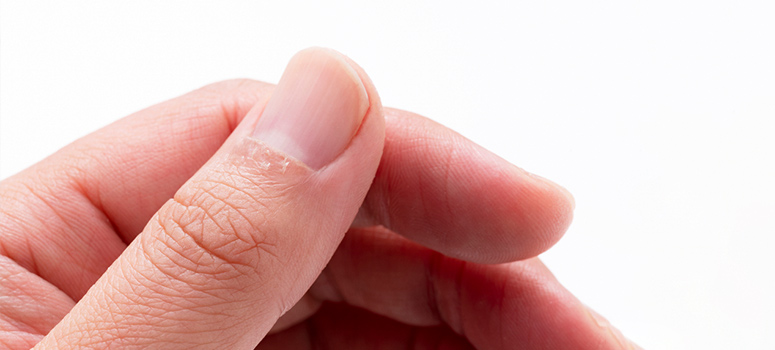Winter is here and so are the colds, coughs, and flu! But don’t forget about something else: hangnails. They’re tiny but can cause mighty pain. In this blog, we’ll discuss what is a hangnail and how to deal with it.
What is a hangnail?
A hangnail is a small piece of skin that forms near your fingernail. Hangnails are usually caused by dry skin or too much pulling on the skin surrounding your nails. You may have noticed your fingernails getting dry and brittle during the winter months—this can contribute to hangnails forming if you are not careful!
Hangnails can be painful at times because they often tear off the top layer of skin when you try to pull them off. This causes an open wound that can become infected if not properly taken care of.
[ NOTE: If you notice any redness or pus coming from where the nail meets your skin, please see a medical professional immediately! An infected hangnail warrants immediate hangnail treatment by experts. ]
Steps to remove a hangnail
- Step 1: Wash your hands before you begin. The more comfortable, relaxed, and flexible your fingers are when they touch the strings of the guitar, the better you’ll play.
- Step 2: After drying your hands, apply a layer of petroleum jelly or another moisturizer to the skin surrounding the hangnail. This will help prevent infection and dryness and make it less likely that the hangnail will tear off. If you like, apply a small amount of antibiotic ointment to the base of the hangnail. This will help keep it from getting infected.
- Step 3: Use a pair of sterilized nail clippers or cuticle cutters to clip the hangnail off. Be careful not to push too hard, as that can cause bleeding; if it does happen, apply pressure until the blood stops flowing. If you have a hangnail that has already torn off, apply pressure to the base of the bleeding area with a clean tissue or cotton swab until it stops bleeding. Then, clean the area well with an antibiotic ointment, rub it in thoroughly, and cover all sides of the wound.
- Step 4: Apply a layer of petroleum jelly or antibiotic cream to the area around your hangnail for added protection from infection.
How to prevent hangnails
To help prevent hangnails, wear gloves when you’re doing work outside such as gardening or yard work. And here are 4 steps to take care of your hangnails so that they can’t come back:
- Trim your nails regularly (at least once a week)
- Protect your cuticles with lotion or oil. Cuticles are the most likely place for a hangnail to form, so make sure you apply oil or lotion after every hand washing
- Keep your hands moisturised. Moisturizing your hands can help prevent hangnails because it keeps your skin flexible, which makes it easier to avoid tearing.
- When trimming or filing your nails, don’t cut too low onto the nail bed—instead, stop about halfway down the nail plate so that you’re not cutting into live skin cells.
- If you find yourself with an actual hangnail in progress (not just a dry spot where it might start), use a pair of scissors or clippers to clip off the loose skin above the hangnail before it becomes worse!
- Don’t pick at your cuticles or nails when they’re dry or cracked. Just like with any other kind of wound, picking at dry or cracked skin can cause an infection that could lead to an even bigger problem (such as a hangnail). So don’t do it!
Takeaways
Hangnail causes include dry skin, and in winter it’s extremely important to keep the skin well moisturised. But even after that, hangnails are common. Fortunately, they are often harmless, and generally, go away on their own. But if you have a hangnail that won’t heal, see your doctor. Neglecting them can lead to infection. The above-mentioned ways are good to deal with a non-infected hangnail. But once you experience pain or notice pus accumulation it is better to consult a dermatologist than treat on your own.














